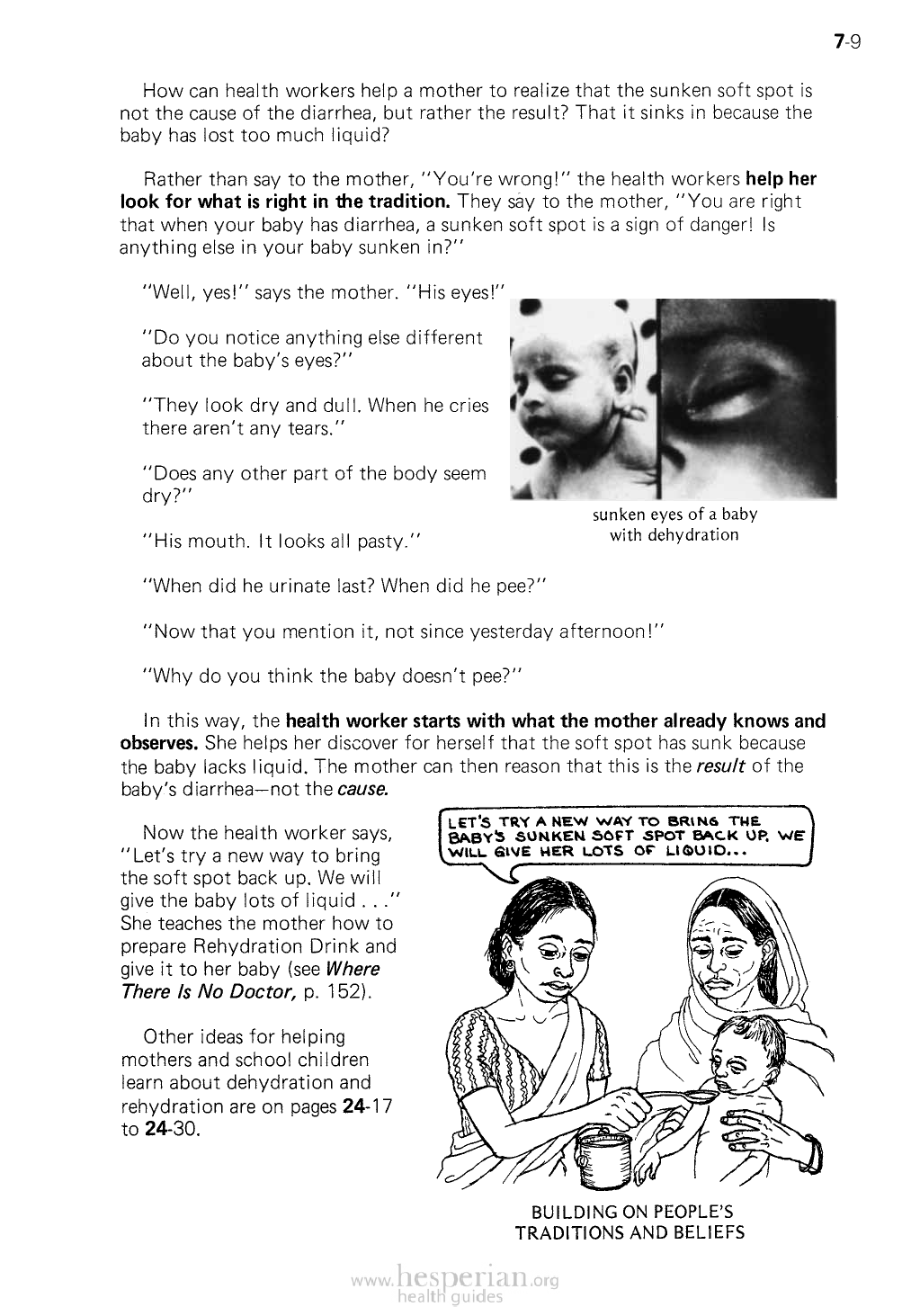
7-9
How can health workers help a mother to realize that the sunken soft spot is not
the cause of the diarrhea, but rather the result? That it sinks in because the baby
has lost too much liquid?
Rather than say to the mother, “You’re wrong!” the health workers help her
look for what is right in the tradition. They say to the mother, “You are right that
when your baby has diarrhea, a sunken soft spot is a sign of danger! Is anything
else in your baby sunken in?”
“Well, yes!” says the mother. “His eyes!”
“Do you notice anything else different
about the baby’s eyes?”
“They look dry and dull. When he cries
there aren’t any tears.”
“Does any other part of the body seem
dry?”
“His mouth. It looks all pasty.”
“When did he urinate last? When did he pee?”
sunken eyes of a baby
with dehydration
“Now that you mention it, not since yesterday afternoon!”
“Why do you think the baby doesn’t pee?”
In this way, the health worker starts with what the mother already knows
and observes. She helps her discover for herself that the soft spot has sunk
because the baby lacks liquid. The mother can then reason that this is the result
of the baby’s diarrhea—not the
causa.
Now the health worker says,
“Let’s try a new way to bring
the soft spot back up. We will
give the baby lots of liquid . . .”
She teaches the mother how to
prepare Rehydration Drink and
give it to her baby (see Where
There Is No Doctor, p. 152).
Other ideas for helping
mothers and school children
learn about dehydration and
rehydration are on pages 24 -17 to
24 -30.
BUILDING ON PEOPLE’S
TRADITIONS AND BELIEFS